(First upload on October 16 2008. Last on September 5 2022) [ 日本語 | English ]
Mount Usu / Sarobetsu post-mined peatland
From left: Crater basin in 1986 and 2006. Cottongrass / Daylily
HOME > Plant list (植物リスト) > Fabaceae (Leguminosae) (マメ科) > Desmodium oxyphyllum
Desmodium Desv. (ヌスビトハギ)D. oxyphyllum DC. (ヌスビトハギ, s.l.)Synonyms:Hylodesmum podocarpum (DC.) H. Ohashi et R. R. Mill, often used var. japonicum Matsum.Nusubitohagi (ヌスビトハギ, 盗人萩, s.s.), bigleaf tick clover Lifeform: perennial forb Distribution: East Asia (Himalayas- China - Korea - Japan) Habitat: sunny forests and thickets Leaf: develped at various locations of stems Seed dispersal: ecto-zoochore (animal dispersal) |
Chromosome number: 2n = 22 Synonyms: D. podocarpum DC. ssp. oxyphyllum (DC.) H. Ohashi, standard var. japonicum (Miq.) Maxim. (s.s.) D. racemosum DC. var. mandshuricum (Maxim.) H. Ohashi (ヤブハギ), leaves mostly developed at the bottom and middle parts of stemsf. albiflorum (Iwata) Sugim. (シロバナヌスビトハギ) f. decorum (Iwata) Sugim. (オキチハギ) |
|
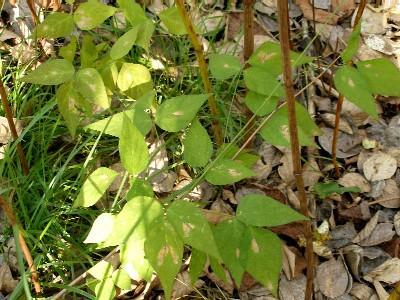 1
1
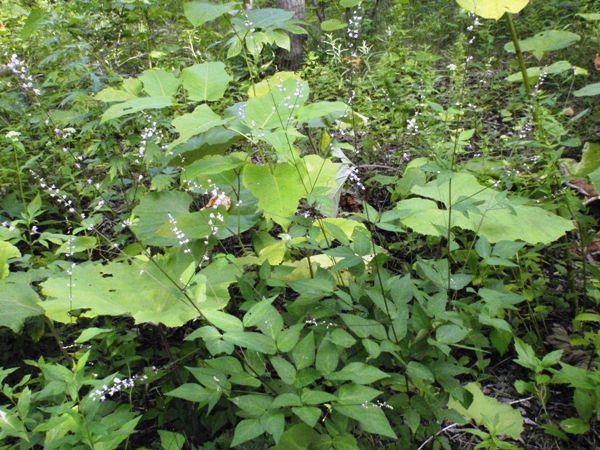 2
2
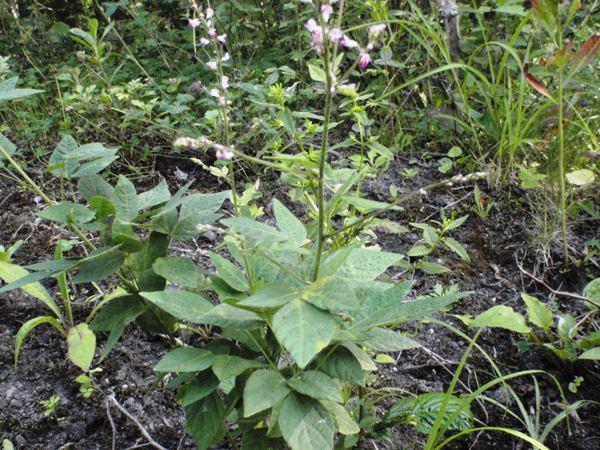 3
3
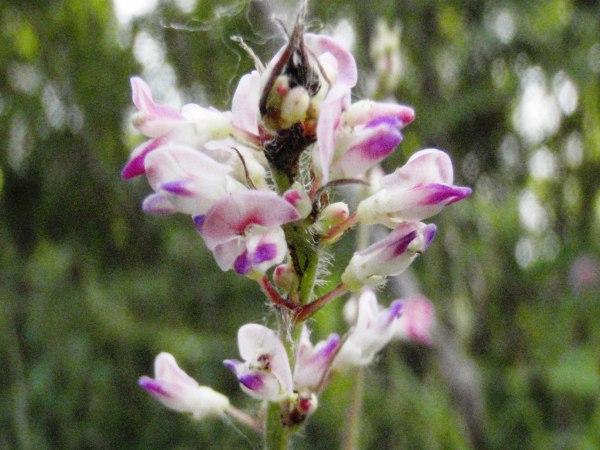 4
4
[1] in the crater basin on September 19 2008, defoliation began. [2-4] at the caldera rim on August 8 2011 (Flora on Mount Usu). Records: on August 13 2019.
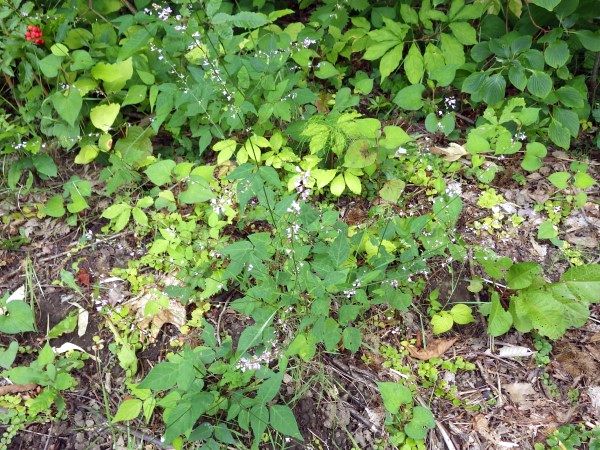 1
1
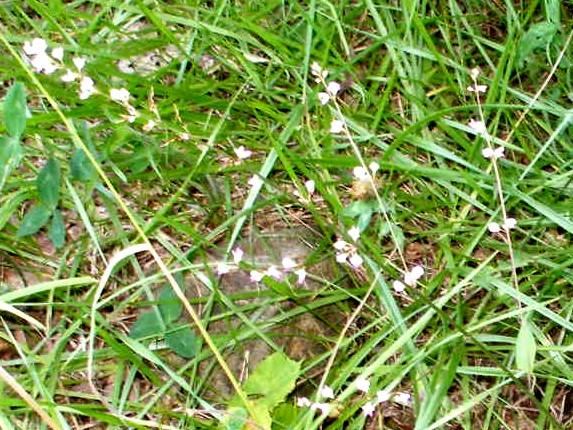 2
2
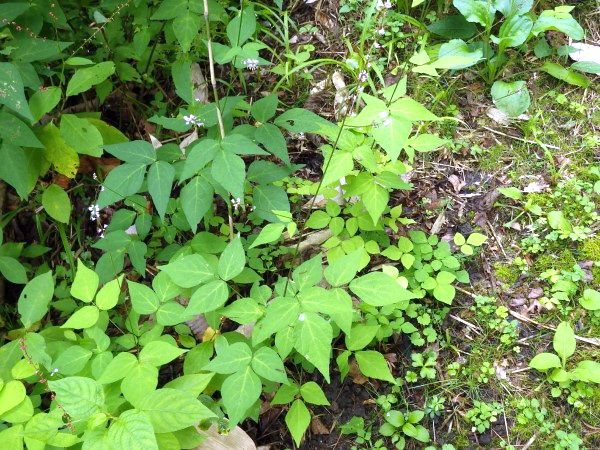 3
3
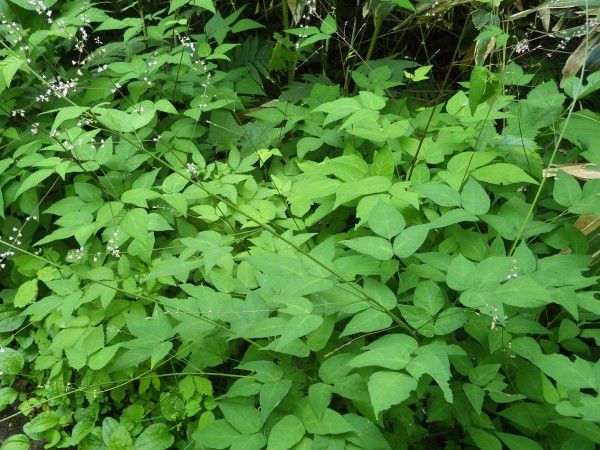 4
4
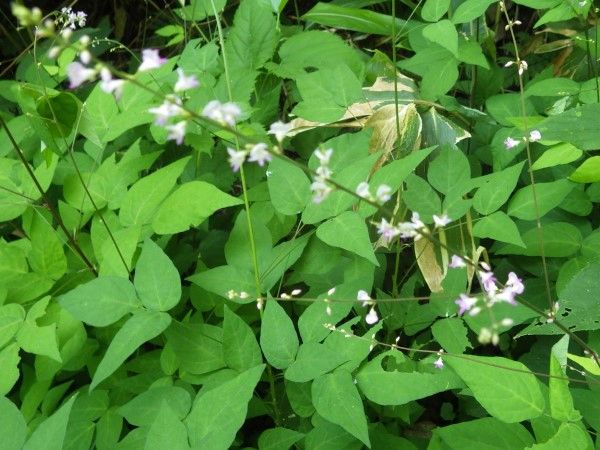 5
5
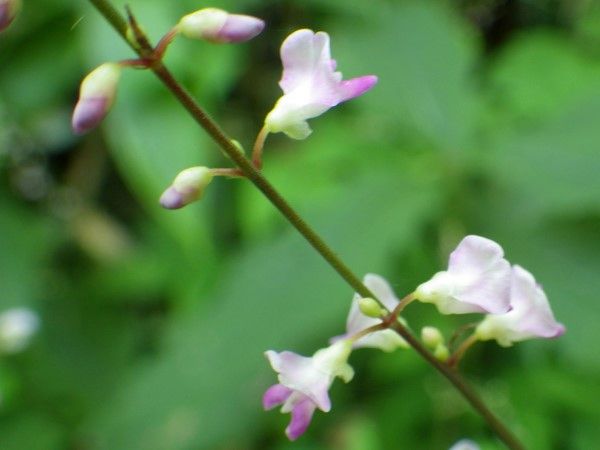 6
6
[1] at a southern part of the Graduate School of Health Sciences of Hokkaido University on August 13 2022. [2] near Tokai University Dai-yon High School on July 31 2009. [3] in Tsukiura Forest Park faced to Toya Lake on September 4 2018. [4-6] along O-sawa Course in Nopporo Forest Park on July 17 2021.